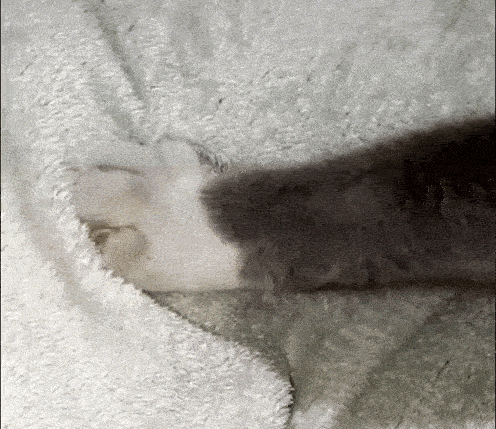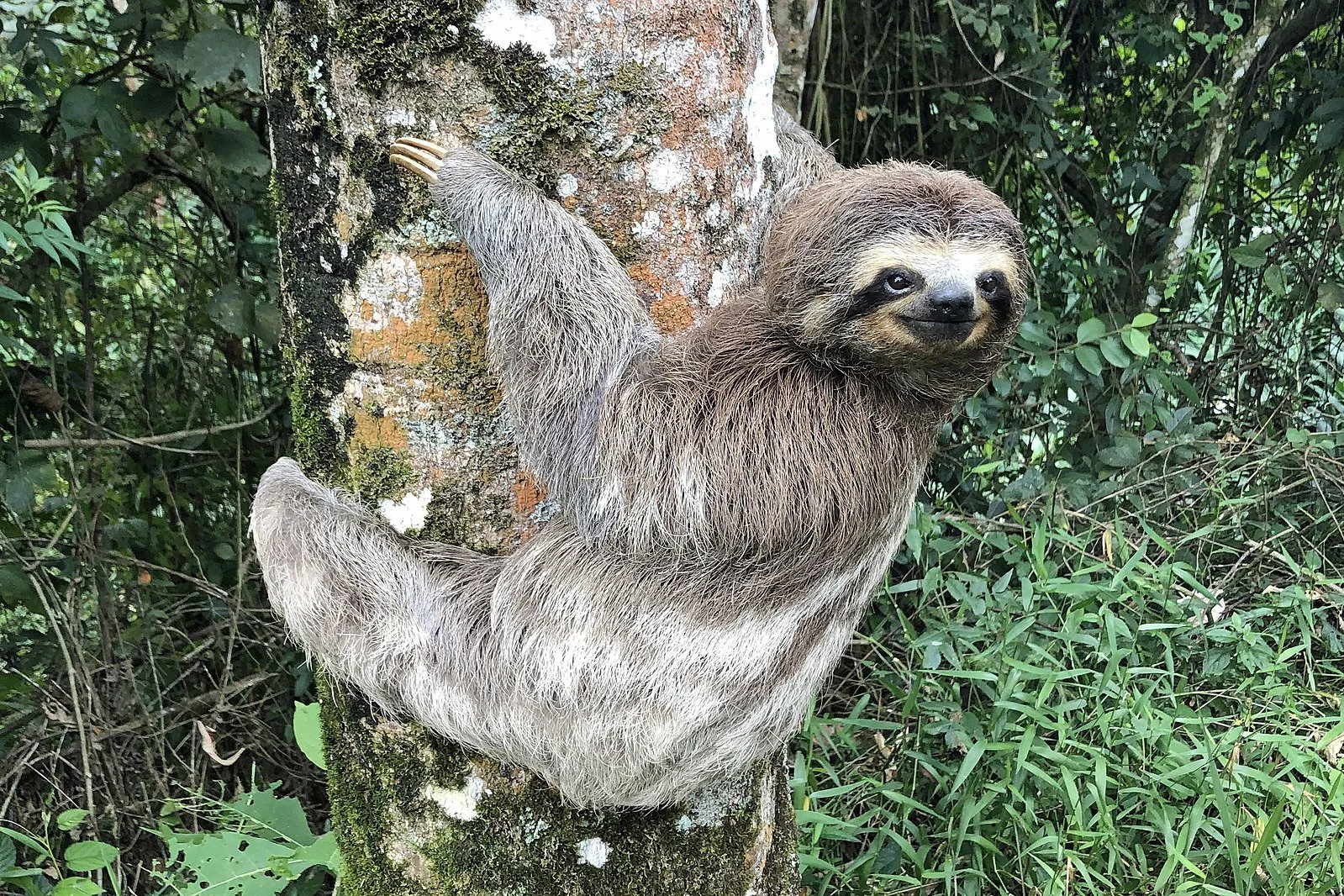Why do cats "make biscuits"?
The short answer
Cats "make biscuits" or knead as a behavior stemming from kittenhood when kneading stimulated milk flow from their mother. Cats continue to "make biscuits" into adulthood as a sign of comfort, affection, and territory marking.
The long answer
Have you had the high honor of receiving a purring cat's rhythmic pawing?
"Cat paws kneading" by Couch-scratching-cats is licensed under CC BY 2.5 DEED.
Also commonly called "making biscuits" or "kneading," cats will often perform this massage-like behavior before they rest.
Where does "making biscuits" come from?
It's theorized that "making biscuits" originates from when kittens are nursing. Kittens will often use a kneading action to stimulate more milk production from their mom.
Here's an adorable video showing this behavior:
Over time, these kittens associate "making biscuits" with positive feelings of safety, warmth, and protection. It's not uncommon for early behaviors with positive associations to carry on through adulthood, like how mouth-to-mouth feeding in primates may be the reason humans kiss.
But why exactly do cats continue to "make biscuits" into adulthood?
Why do cats "make biscuits"?
Reason #1: They are trying to show affection.
From the moment they were born, kittens "made biscuits" on their favorite cat of all: mom. If a cat is "making biscuits" on you, it's likely that they are trying to show you they are feeling happy, relaxed, and connected to you.
Reason #2: They are making a comfortable bed.
It's not just domestic cats that "make biscuits." Big cats, like lions or tigers, have been observed to knead the ground before lying down. This pre-sleep routine likely makes the ground softer and more comfortable. Your cat could be doing the same when they "make biscuits" on the ground (or on your belly).
Reason #3: They are marking their territory.
Cats have scent glands between their toes, called interdigital glands. It's thought that cats may be emitting pheromones, or chemical signals detectable by animals of the same species, to mark their territory.
I absolutely could not miss this opportunity to include a picture of cat toes. "Pink kitty toes 2 (48771261711)" by James St. John is licensed under CC BY 2.0 DEED.
This behavior not only communicates to other cats that the bed, couch, or your belly belongs to them, but it also likely helps them feel more secure and safe.
Reason #4: They are a female cat in heat.
Female cats have been observed to "make biscuits" when they are ready to mate, also known as being in heat. In addition to purring and stretching, she may knead the air while lying on her side as a signal to welcome male suitors.
Reason #5: They are a female cat going into labor.
One of their first signs of a female cat going into labor is "making biscuits." Like a good mom, she may be preparing a comfortable bed for her soon-to-be-born kittens so they have a nice place to rest.
Then, of course, these kittens will learn to express their mom's milk by kneading, and the cycle of "biscuit-making" will continue.
Curious about how the world works?
Today You Should Know is a free, weekly email newsletter designed to help you learn something new every Friday.
Subscribe today 👇
Check out some other curious questions:
Sources
Albright, J. (2021, June 14). Why do cats knead with their paws?. The Conversation. https://theconversation.com/why-do-cats-knead-with-their-paws-156254
Cornerstone Veterinary Hospital of Clifton Park. (2023, January 17). Cat Kneading: Why Do Cats Make Biscuits?. Cornerstone Veterinary Hospital of Clifton Park. https://cvhcp.com/blog/cat-kneading/
Four Paws Inc. (n.d.). Why Do Cats Knead? 5 Reasons Cats “Make Biscuits.” Four Paws. https://www.fourpaws.com/pets-101/cat-corner/why-do-cats-knead
Hart, H. (2023, December 1). Why Do Cats Knead?. PetMD. https://www.petmd.com/cat/behavior/why-do-cats-knead






It’s like an American accent but with calendars.